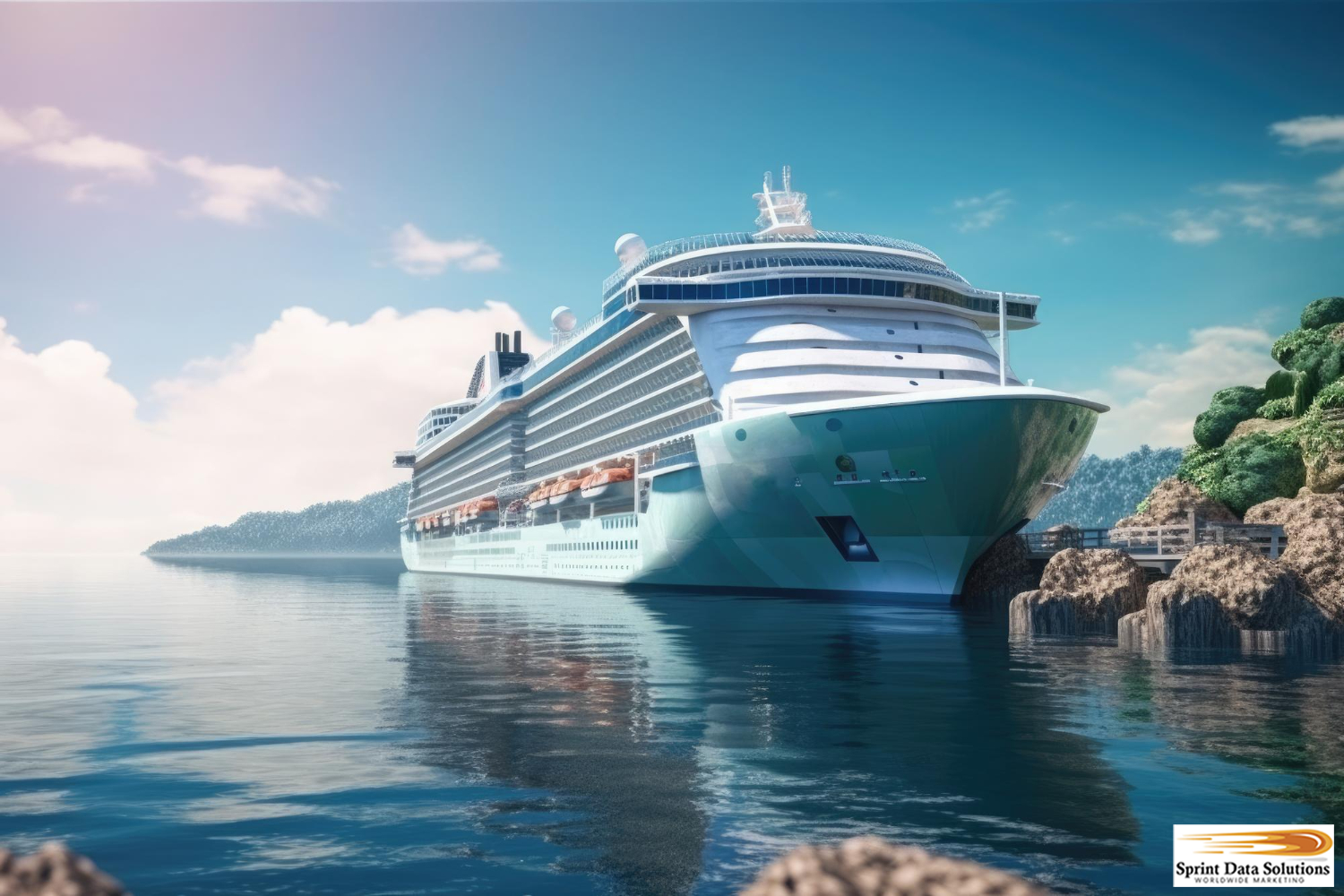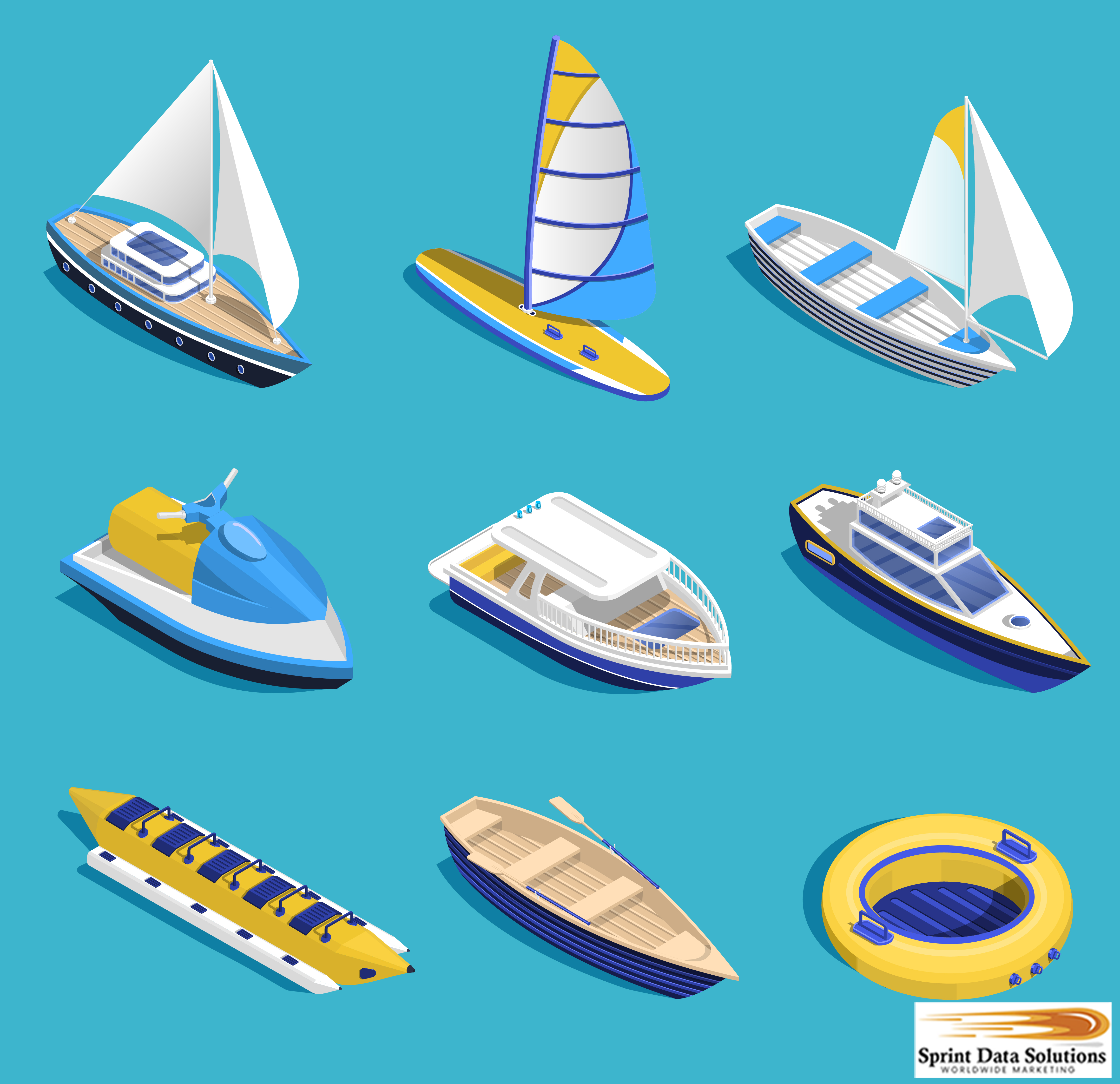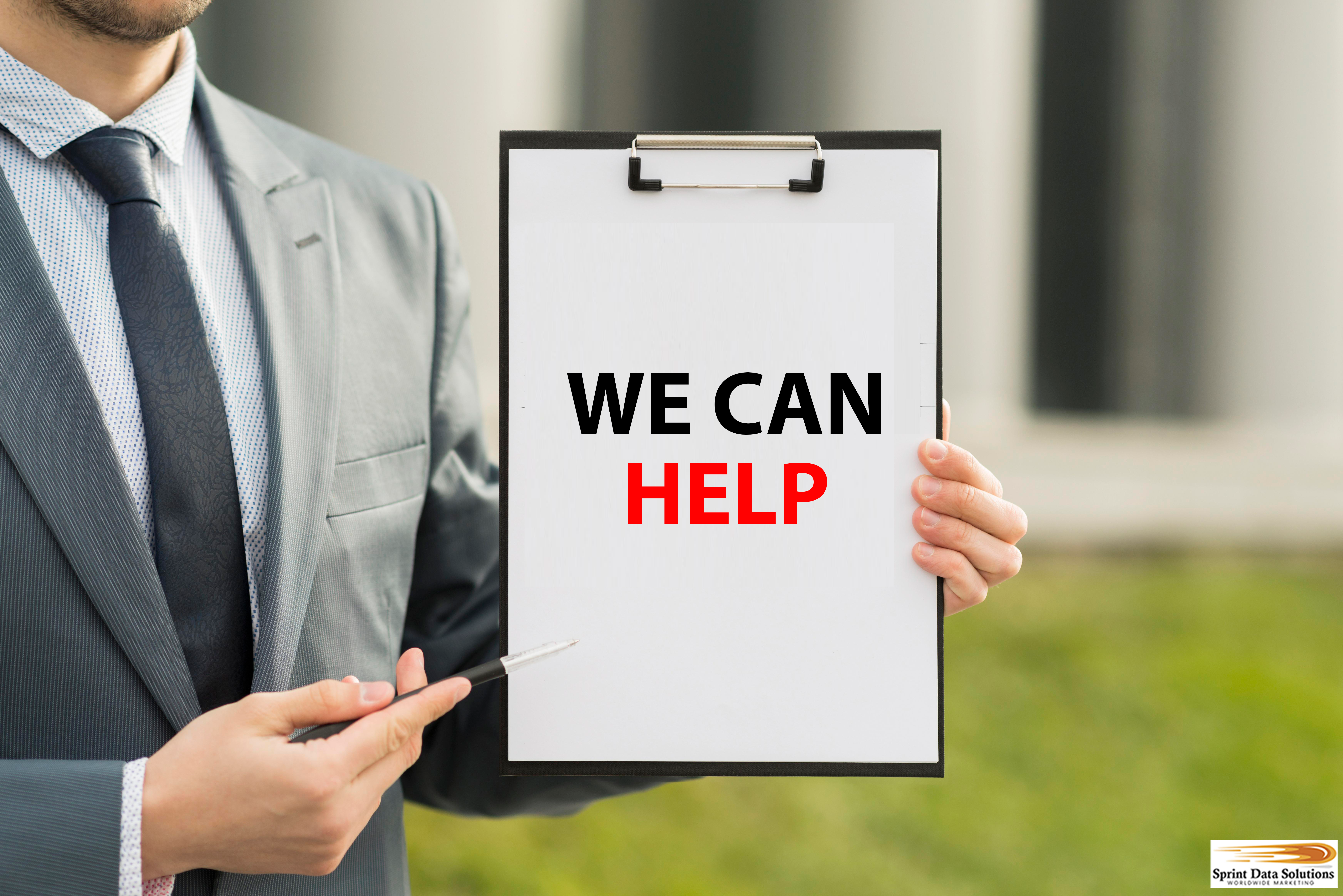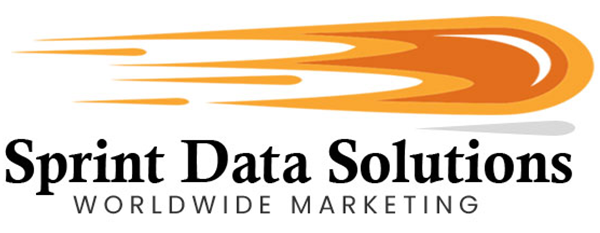Boat Owners Are An Excellent Target Market
Boat owners represent a dynamic and distinctive audience segment, defined by their passion for freedom, nature, and exploration. These individuals often embrace boating not just as a hobby, but as a lifestyle that symbolizes independence, skill, and a deep appreciation for outdoor living. Whether navigating open waters, coasting along scenic rivers, or anchoring in hidden coves, boaters are typically hands-on, self-reliant, and enthusiastic about the natural world. Many are avid sportsmen—fishermen, hunters, and campers—who relish the opportunity to blend adventure with leisure. Others use their vessels as a social hub, gathering friends and family for memorable outings, sun-soaked weekends, or celebrations under the stars. Some pursue epic maritime journeys, pushing the boundaries of exploration and endurance as they travel along coastlines or embark on intercontinental voyages.
From a marketing perspective, boat owners are a lucrative yet niche audience. They are often financially stable, discerning in their purchases, and value experiences over material possessions. Because they spend significant time away from traditional media channels—often out on the water or engaged in outdoor activities—reaching them through generic, passive marketing methods can be ineffective. However, when approached with a precise and personalized strategy, boat owners respond with high engagement and strong loyalty. Our comprehensive boat owners mailing list enables businesses to connect with this unique demographic directly. Backed by rich, up-to-date data and detailed consumer profiles, our list empowers marketers to craft tailored campaigns that resonate with boaters’ values, interests, and lifestyle. Whether your offerings include luxury goods, marine products, travel services, or recreational gear, this targeted resource ensures you reach the right audience with the right message at the right time.

Boats Are Growing In Popularity Every Year
The U.S. recreational boat market, valued at $16.26 billion in 2021, is projected to grow to $26.18 billion by 2027, registering a robust compound annual growth rate (CAGR) of 8.26%. This surge is largely fueled by rapid technological innovations in marine equipment, including advancements in electric propulsion systems, GPS navigation, and smart connectivity features that enhance safety and user experience. Additionally, the rising enthusiasm for water-based leisure activities—such as wakeboarding, fishing, and sailing—combined with increased disposable income, has led to greater consumer spending on recreational boating. The post-pandemic shift toward outdoor and nature-based recreation has further amplified this trend. The tourism sector’s revival has also played a crucial role, with boats being increasingly adopted not only for private leisure but also for commercial uses such as waterfront dining, luxury charters, guided eco-tours, and floating event venues. Small businesses are capitalizing on boats as platforms to attract clients and provide unique experiences, underscoring a shift toward multipurpose watercraft that blend recreation with entrepreneurial ventures.
Boat Owner Demographics
Recreational boating continues to be a major pastime in the United States, with over 100 million Americans participating annually—amounting to nearly one-third of the entire population. Approximately 12% of U.S. households own at least one boat, reflecting the widespread appeal of boating as a leisure activity. While the average age of a boat owner remains around 54, there is a noticeable demographic shift taking place: millennials now make up 31% of all boat owners, signaling a generational expansion in the market. Interestingly, boat ownership spans a wide range of income levels. Although often associated with affluent lifestyles, 61% of boat owners report household incomes below $100,000 per year, indicating that boating is increasingly accessible to middle-income earners. The annual cost of owning a boat—including maintenance, storage, fuel, and insurance—typically ranges from $5,000 to $8,000. In recent years, the rise of online marketplaces and digital boat-buying platforms has significantly contributed to the growth of the recreational boating industry, making the purchase process more convenient and transparent. This ease of access, combined with evolving consumer preferences and broader interest across income and age brackets, continues to propel the industry forward.
Boat Owners Are The Ideal Market For Many Industries
Boat owners represent a highly valuable and responsive audience for a wide range of businesses and services. Their lifestyle often reflects a higher disposable income, a passion for leisure activities, and a willingness to invest in quality products and experiences. Whether you’re in the marine equipment industry, luxury goods, travel and tourism, insurance, real estate near coastal or lakefront areas, or even high-end automotive and RV sales, targeting boat owners can significantly enhance your marketing reach and ROI. Our boat owners list provides a comprehensive and meticulously verified database that enables precise targeting, ensuring your campaigns reach individuals most likely to engage with and purchase your offerings. If your business aligns with the interests, needs, or lifestyle of boating enthusiasts, this list can be an essential asset in your customer acquisition strategy.
Boat Insurance
In the United States, the majority of states mandate a minimum level of liability insurance in order to legally operate a boat. This liability coverage typically includes protection for both property damage (PD) and bodily injury (BI) caused to others in the event of an accident. Many boat owners choose to go beyond the basic requirements by purchasing full coverage policies, which bundle comprehensive (comp) and collision (coll) coverages. Comprehensive coverage safeguards against non-collision-related damages such as theft, vandalism, or weather-related incidents, while collision coverage pays for repairs or replacement if the boat is damaged in a crash, regardless of fault. In addition to these core protections, boaters often opt for various supplemental coverages. Popular add-ons include medical payments (med-pay) or personal injury protection (PIP) to cover healthcare costs for the boat’s occupants, coverage for personal effects such as fishing gear and electronics, and even roadside assistance for trailer-related breakdowns. These optional coverages are particularly appealing to recreational boaters and outdoor enthusiasts who value peace of mind during their time on the water and the road.
Travel And Tourism
Boat owners represent a highly engaged and adventurous segment of the travel market, driven by a desire for immersive, nature-based experiences. These individuals frequently navigate a wide range of aquatic environments, from tranquil inland lakes and rivers to dynamic coastal and marine regions. As such, businesses located near these waterways—whether in secluded rural areas or bustling seaside destinations—are uniquely positioned to capture their attention. Accommodations that offer proximity to marinas, boat ramps, or private docks are particularly attractive to this demographic, making boutique hotels, motels, resorts, and vacation rentals ideal partners in their travel planning. Beyond boating, this audience often pursues complementary outdoor activities such as fishing, kayaking, camping, hiking, and hunting. This overlap makes them a valuable target for a variety of adventure tourism providers, including fishing charters, eco-tour operators, nature lodges, campgrounds, and outdoor equipment retailers. With access to our meticulously curated boat owners list, travel and tourism brands can tap into a well-defined, experience-driven audience that consistently seeks out meaningful connections with nature, adventure, and recreation.
Docks
Owners of larger boats—such as yachts, houseboats, and pontoons—typically do not transport their vessels by trailer due to their size and complexity. Instead, these boats are commonly kept at marinas or on private or rented dock systems. Many of these owners have direct access to private waterways and require permanent or seasonal dock installations to accommodate their vessels. Others prefer to rent slips at high-traffic marinas located along popular lakes, rivers, and coastal areas, where they often rely on lift services to safely store and maintain their boats out of water when not in use. For businesses involved in dock construction, dock rental, or lift services, a curated list of large boat owners is an invaluable resource for targeted outreach and sales, ensuring marketing efforts reach high-value, relevant customers who have ongoing dock-related needs.
Boat Storage
Boat owners who tow their vessels and choose not to keep them docked often seek reliable storage options during the off-season or periods of infrequent use. Self-storage facilities and outdoor storage lots offer convenient and secure alternatives, catering to a wide range of boat sizes and types. For those storing their boats on private property, such as driveways or backyards, protective accessories become essential to maintain their investment. High-quality boat covers are among the most critical accessories, shielding vessels from harsh weather, harmful UV rays, moisture, and accumulating dirt. Additionally, boat jacks, cradles, and lifts are vital to elevate the hull off the ground, preventing warping, flat spots on tires or bunks, and corrosion from prolonged ground contact. Smaller watercraft like kayaks, paddleboards, and canoes also benefit from smart storage solutions such as wall-mounted racks, pulley-based garage hoists, and ceiling-mounted systems, all of which help save space and prolong the equipment’s lifespan. Whether stored at a facility or at home, proper storage practices and accessories play a crucial role in preserving the condition and value of boats and watercraft.
Tow-Capable Vehicles
For boat owners, having a tow-capable vehicle is often a necessity—especially for those who do not have the convenience of a rented or private dock. These individuals must regularly transport their boats to and from lakes, rivers, or coastal access points, which demands a vehicle with sufficient towing capacity. Heavy-duty trucks, large SUVs, and 4×4 vehicles are commonly favored for this task due to their powerful engines, enhanced torque, and reinforced towing features. These vehicles are capable not only of pulling medium to large boats and trailers but also of carrying additional equipment such as life jackets, fishing gear, coolers, and other recreational supplies. While smaller watercraft like kayaks, canoes, and lightweight fishing boats can be towed by midsize cars or crossovers, most dedicated boaters prefer the versatility and reliability of trucks designed for heavier loads and challenging terrains. Choosing the right vehicle ensures safer, more efficient transport, reducing wear and tear on both the vehicle and the boat over time.
Boat Trailers, Vehicle Hitches, And Other Vehicle Accessories
In addition to owning a tow-capable vehicle, boat owners must ensure their vehicles are equipped with the proper towing hitch and a trailer specifically rated for marine transport. Not just any trailer will suffice—trailers must be appropriately matched to the weight, length, and hull design of the boat to ensure safety and stability during transport. Towing large and heavy watercraft places significant stress on a vehicle, leading to accelerated wear on critical components such as tires, brake systems, engines, and suspension. As a result, boat owners often require more frequent vehicle maintenance and specialized repair services. This heightened demand creates valuable opportunities for businesses in the automotive repair, parts supply, and towing equipment sectors. With targeted outreach, companies offering these services can benefit significantly by gaining access to a high-quality list of boat owners who regularly need their products and expertise.
Boating Safety Gear
Boat riders prioritize safety by investing in a range of protective gear designed to safeguard themselves and their passengers from unexpected events, such as sudden weather changes or emergencies on the water. Among the essential equipment are U.S. Coast Guard-approved life jackets and wearable personal flotation devices (PFDs), which are crucial for ensuring buoyancy and reducing drowning risks. In addition to wearables, boat owners often carry throwable flotation aids, such as life rings or cushions, which can be easily tossed to someone in distress. To enhance visibility and communication during emergencies, visual signaling tools like flares or strobe lights, along with sound-producing devices like whistles, air horns, or marine radios, are also critical. Furthermore, preparedness is bolstered by onboard fire extinguishers for dealing with potential fires, comprehensive first aid kits for treating injuries, and waterproof flashlights or headlamps to maintain visibility in low-light conditions. Many responsible boaters also include navigation tools, emergency blankets, and extra batteries as part of their safety arsenal, recognizing that being well-equipped can make a significant difference in both routine outings and critical rescue situations.
Communication Devices
Boat owners frequently invest in reliable communication equipment to ensure safety while on the water. Among the most commonly used tools are very high frequency (VHF) radios, which are essential for short-range communication with other vessels, marinas, and emergency services. These radios are especially useful for issuing distress signals and receiving important weather updates. In addition, many boaters equip themselves with satellite phones, which provide global coverage and function even in remote oceanic areas where cell service is unavailable. Other advanced options include Emergency Position Indicating Radio Beacons (EPIRBs) and Personal Locator Beacons (PLBs), which can automatically transmit distress signals and location data to rescue authorities. Given the frequent lack of cellular coverage at sea, such devices are indispensable for maintaining communication and ensuring a swift response in emergencies.
Navigation Tools
Another essential category of products for boat owners is navigation tools. Accurate navigation is critical for safety and efficiency on the water, and there are numerous methods used depending on the vessel, location, and preferences of the navigator. Traditional methods such as dead reckoning, pilotage, celestial navigation with sextants, and manual compass-based mapping using paper charts remain popular among seasoned mariners and hobbyists who value self-reliance and time-tested practices. However, technological advancements have introduced a wide range of modern alternatives, including GPS systems, inertial navigation, radar, sonar, and real-time satellite-based tools that offer precise positioning and route planning. Many boaters now combine both analog and digital tools for redundancy and accuracy. Our boat owners list is an excellent resource for manufacturers and marketers of both traditional and advanced marine navigation systems, providing direct access to a niche audience that actively seeks reliable and innovative navigational solutions.
Outdoor Gear
Boat owners are typically passionate outdoor enthusiasts who embrace a lifestyle filled with adventure and exploration. Their love for nature often translates into a keen interest in activities such as camping, fishing, hunting, and hiking. This makes them a valuable target audience for outdoor retailers and gear manufacturers. These individuals frequently invest in high-quality fishing equipment, including rods and reels, specialized lines, tackle boxes, and bait tailored to various fishing conditions. Their camping interests also drive demand for rugged backpacks, weather-resistant tents, compact cooking gear, and insulated sleeping bags designed for comfort and durability. Moreover, many boat owners pursue hunting, leveraging their boats to access remote, game-rich environments that are often unreachable by land. This creates a consistent need for premium hunting gear like chest waders, high-performance optics, camouflage clothing, and a range of hunting weapons such as bows, arrows, shotguns, and rifles. For outdoor outfitters, tapping into a boat owners list offers a strategic opportunity to reach a well-aligned, gear-hungry consumer segment with a high propensity to purchase across multiple outdoor categories.
Boat Maintenance Tools
Boat owners often invest in a wide array of tools and equipment to maintain their vessels and ensure safety on the water. Many prefer to handle basic maintenance and minor repairs themselves, relying on standard tools such as adjustable wrenches, socket sets, screwdrivers, and needle-nose pliers. In addition to these general tools, specialized marine tools are essential for specific tasks—rigging knives for sailboats, moisture meters to detect water damage, and tow ropes for towing or docking maneuvers. Engine-powered boats demand further care, requiring regular supplies like fuel stabilizers, marine-grade lubricants, oil filters, and fuel treatment additives. Electrical diagnostics may call for multimeters, battery testers, and onboard charging devices. For safety and preparedness, emergency tools are a must-have, including waterproof flashlights, marine-grade flares, fire extinguishers, bilge pumps, and first-aid kits. Overall, maintaining a boat involves a combination of standard tools, specialized marine gear, and critical safety equipment to keep everything in working order and ready for any situation on the water.
Boat Accessories
Boats require a range of specialized accessories designed to handle the challenges of life on the water, particularly the constant motion caused by waves. To ensure safety and comfort, many boats are equipped with furniture such as tables, chairs, and cup holders that can be securely bolted to the deck, preventing movement during travel. Essential marine equipment includes helm pads for comfort during navigation, anchors for securing the vessel, and dock lines for tying up at marinas or docks. Additionally, boats rely on marine-grade batteries and waterproof charging systems to maintain electrical functionality in wet environments. Electrical components must be corrosion-resistant and tailored for marine use. Depending on the type and purpose of the boat—such as sailing, fishing, or leisure—owners may also require items like sails, non-slip marine flooring, fenders, winches, bilge pumps, and mooring systems. All these components ensure a smooth, safe, and enjoyable boating experience while withstanding harsh marine conditions.
Alcohol
Owners of recreational boats such as pontoon boats and yachts are often passionate about hosting memorable social gatherings on the water. These boaters frequently incorporate alcoholic beverages into their entertainment plans, with beer, wine, champagne, and cocktails being popular choices for relaxing with friends and family under the sun. To enhance the overall experience, they invest in a variety of beverage-related accessories designed for convenience and luxury. Items like insulated koozies, high-quality coolers, floating drink holders, and stylish wine buckets are must-haves for keeping drinks chilled and easily accessible throughout the day. These accessories not only serve practical purposes but also add a touch of sophistication and fun to the onboard ambiance. As a result, they present excellent opportunities for businesses offering premium or personalized drinkware and storage solutions tailored to the boating lifestyle.
Watersport Gear, Games, And Toys
Boat owners are passionate about maximizing their time on the water, and they often invest in a wide variety of accessories that enhance both recreation and adventure. Watersports gear such as wakeboards, inflatable towable tubes, kneeboards, and water skis are in high demand, offering exhilarating ways to enjoy lakes and oceans. In addition to thrill-seeking equipment, many opt for leisure accessories like sea scooters for snorkeling, large inflatable loungers, floating coolers, and even floating islands that turn the water into a social space. Families and groups frequently add waterproof outdoor games to the mix for dockside or onboard fun. Coastal boaters, especially, tend to invest in premium diving and scuba gear, underwater cameras, and spearfishing equipment to fully explore marine environments, coral reefs, and wreck sites. These accessories not only elevate the boating experience but also provide new ways to connect with nature and loved ones on the water.
The Four Classes Of Boats
Boats are categorized into distinct classes based primarily on their overall length. Class A boats represent the smallest category, typically measuring less than 16 feet in length, and are often used for personal or recreational purposes. Class 1 boats span from 16 to 26 feet, making them suitable for coastal cruising and small-scale fishing trips. Class 2 boats, which measure between 26 and 40 feet, offer more space and capabilities, making them ideal for extended outings or larger groups. Class 3 boats range from 40 to 65 feet, and are frequently used for offshore fishing, charters, or as sizable recreational vessels. Boats exceeding 65 feet in length are categorized separately: if they are under 300 gross tons, they fall under the Small Research Vessel (SRV) Class, commonly used for scientific or technical missions. Vessels over 65 feet not used for research are typically classified as luxury yachts or commercial vessels, depending on their design, function, and outfitting.

The Different Boat Categories
Boats are generally classified into three primary types based on their method of propulsion. The first category comprises human-powered boats, which include rowboats, kayaks, canoes, and dinghies. These boats rely entirely on human effort for movement and navigation, often using oars or paddles. The second category is motor-powered boats, such as fishing boats, speedboats, ski boats, and cruisers. These vessels are driven by engines, which can be powered by gasoline or electricity, offering higher speed and greater range compared to human-powered boats. The third type is wind-powered boats, which are propelled by sails that harness the energy of the wind. Sailboats fall exclusively into this group, and they require skillful handling to navigate effectively. It’s important to note that some modern boats use hybrid propulsion systems, combining two types of power sources—for instance, a sailboat with an auxiliary motor. In addition to these propulsion-based types, boats are also categorized into four main functional categories, which consider their intended use, such as recreational, commercial, military, and specialized purposes like rescue or research. Understanding both the propulsion method and functional category helps in accurately identifying and selecting the right type of boat for any specific need.
Category A: Ocean Class Boats
Ocean-class boats are built to withstand the demanding conditions of open-sea travel, making them exceptionally durable and reliable. Engineered for long voyages across oceans, these vessels are equipped to endure high winds, rough seas, and moderate storms with minimal risk. Their construction often includes reinforced hulls, advanced navigation systems, and redundant safety features to ensure performance and survivability even in challenging weather. In addition to their seaworthiness, ocean-class boats are designed for extended autonomy; they typically come with onboard living accommodations such as sleeping quarters, kitchens, and freshwater systems, enabling passengers to remain at sea for weeks or even months. Owners of these vessels tend to be highly adventurous individuals with the financial means to invest in top-tier marine technology, and they often use their boats for ambitious expeditions, transoceanic crossings, or exploration in remote regions of the world.
Category B: Offshore Class Boats
Offshore class boats are specifically engineered to handle the demanding conditions found several miles away from the coastline. While they are not typically intended for transoceanic voyages, these vessels are more than capable of navigating open water environments where moderate to rough sea conditions are common. Offshore boats are designed with deep-V hulls or similar structures that allow them to cut through choppy waves, endure high winds, and manage occasional mild storms with relative safety and stability.
These boats strike a balance between performance and durability, making them ideal for recreational activities such as deep-sea fishing, scuba diving, and offshore cruising. Many are equipped with advanced navigation and communication systems, live wells for fishing, rod holders, and comfortable seating or cabin space for extended day trips. Owners of offshore boats often have a passion for saltwater sports and prefer the versatility these vessels offer—being seaworthy enough for adventure, yet manageable enough for day-use close to the shore.
Category C: Inshore Class Boats
Inshore class boats are specifically built for navigating calm to moderately turbulent waters such as lakes, rivers, bays, and areas close to shorelines. These vessels are engineered to handle moderate wind conditions and waves of medium height, making them ideal for recreational boating in protected waters. Due to their manageable size and straightforward controls, they are particularly favored by casual boaters and first-time owners. Inshore boats are widely appreciated for their versatility, offering an enjoyable platform for leisure activities such as fishing, sightseeing, and family outings. Their relatively shallow draft allows access to areas larger vessels cannot reach, enhancing their appeal for exploration and adventure close to land.
Category D: Coastal Water, Inland, and Sheltered Waters Class Boats
Category D boats are specifically engineered for use in sheltered inland waters such as rivers, canals, and small lakes. These vessels are built to safely operate in conditions with light winds up to Force 4 (13–18 mph) and small waves up to 1.64 feet (0.5 meters). Due to their simplicity, stability, and ease of handling, Category D boats are particularly favored by beginners and recreational users. This category includes lightweight and portable craft like kayaks, canoes, dinghies, and small motorboats. They are ideal for individuals who are new to boating and are beginning to explore the basics of vessel handling, navigation techniques, and routine maintenance. Owners of Category D boats often enjoy peaceful outdoor excursions and are drawn to nature, adventure, and the calming environment of inland waterways.
Types Of Boats
Our boat owners contact list features a diverse range of individuals who own various types of boats. These vessels span a wide spectrum in terms of design, functionality, and purpose. From compact personal watercraft to luxurious yachts, and from practical fishing boats to high-performance speedboats, the list includes owners of both recreational and commercial vessels. Notably, many of the boats represented are of significant size—equal in length to or longer than standard vessels—ensuring that our database offers access to high-value, well-maintained boats and engaged, serious owners. This variety provides excellent opportunities for targeted outreach and tailored marketing across a broad boating demographic.
- Bowrider Boats
- Cabin Cruiser Boats
- Canal Boats
- Canoes
- Center Console Boats
- Cigarette Boats
- Cuddy Cabin Boats
- Deck Boats
- Dinghies
- Fishing Boats
- Houseboats
- Inflatable Boats
- Jon Boats
- Kayaks
- Motorboats
- Pontoon Boats
- Rowboats
- Sailboats
- Ski Boats
- Skiffs
- Speedboats
- Trawlers
- Tugboats
- Yachts
Connect with a wide range of verified marine enthusiasts through our comprehensive boat owners list, which includes not only individual boat owners but also yacht club members, marina tenants, and registered vessel operators across the country. This detailed database gives you access to valuable insights such as boat type, ownership history, geographic location, and more—helping you target your marketing campaigns with precision and impact.
Tap Into The Growing Market Of Boat Owners
Sprint Data Solutions Worldwide Marketing, proudly founded in Las Vegas by a Service-Disabled Veteran, has grown to become a leader in precision-targeted marketing solutions. We specialize in providing one of the most expansive and meticulously curated databases in the industry, offering a diverse array of specialty contact lists tailored to meet the unique demands of direct marketing strategies—including email outreach, postal campaigns, telemarketing, and more. Our lists are far more than just names and numbers—they are comprehensive profiles enriched with detailed demographic data (such as age, income, and location), psychographic insights (including consumer attitudes, interests, and behavioral tendencies), and nuanced lifestyle attributes. This multi-dimensional data enables businesses to craft campaigns with laser-focused precision, reaching only the most relevant, engaged, and conversion-ready audiences.
At Sprint Data Solutions, we are committed to delivering not only quantity but also the highest standards of quality and accuracy. Every list undergoes a rigorous, multi-tiered verification process leveraging the latest in data hygiene and compliance technologies. We use trusted industry systems including the National Change of Address (NCOA), Certified Address Accuracy System (CAAS), and Delivery Point Validation (DPV) to ensure that our information is always up-to-date, deliverable, and aligned with USPS standards. Furthermore, our datasets are continuously updated and refined through proprietary data-cleansing protocols and cross-verified with third-party sources to eliminate duplicates, outdated entries, and inconsistencies.
What sets us apart is our dedication to empowering clients with data that drives measurable outcomes. Whether you’re looking to build customer loyalty, boost response rates, or improve ROI through smarter segmentation, Sprint Data Solutions offers the strategic intelligence and granular targeting capabilities to get you there. From small businesses to Fortune 500 enterprises, our clients trust us to fuel their growth with actionable data that unlocks real marketing potential.

Access The Right Boat Owners For Your Marketing Efforts
At Sprint Data Solutions Worldwide Marketing, we provide comprehensive, verified information on every individual included in our targeted contact lists. Our data solutions go far beyond basic demographics—giving you the power to filter, sort, and segment your audience based on a wide range of attributes including location, purchase behavior, lifestyle preferences, and more. This level of detail ensures you’re not just reaching boat owners, but the right boat owners who are most likely to engage with your products or services.
Our carefully curated lists are not only a tool for outreach—they’re also a rich source of market intelligence. By analyzing the data, you can identify emerging trends, evaluate customer behaviors, and fine-tune your marketing strategies to align with current market demand. Whether your outreach involves cold calling, email campaigns, or direct mail marketing, our lists are optimized to increase your response rates and maximize return on investment.
When you partner with Sprint Data Solutions, you gain more than just access to a database. You get a dedicated team of marketing professionals who will work with you one-on-one to help interpret the data, build custom segments, and develop actionable strategies. We’re here to ensure your outreach is as targeted and effective as possible.
Ready to take your marketing to the next level? Reach out to Sprint Data Solutions Worldwide Marketing today, and let our experts provide the insights and tools you need to succeed.






